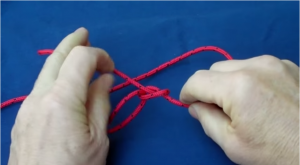Plan. Plan! Who's got the Plan?? If you don't, it's ok. We're going to give you some great tips and suggestions for carving out your own. It's simple, straight forward and easy to follow. When you're done reading the aforementioned items, we recommend that you start your own plan – Yes! In writing – while it's fresh in your brain.
There are five objectives for an effective emergency communication plan. I call these my Essential Elements of Effective Emergency Communication
. Sounds pretty legit, doesn’t it? To be effective, communication has to be; Clear, Complete, Unambiguous, Concise, and Confirmed.
Just to be complete, let’s make each of these five clear and concise, then you can confirm they’re unambiguous by reading your comments at the end of the page. (Aahh. You noticed me starting to use repetition to get you used to the words so they’re more easily remembered).
[Step 1] Clear – Your communication has to get through somehow and they have to clearly get the message. That means not only hearing it clearly but understanding the intent of your message clearly. Remember, what you mean to say, what you say and what they understood you to say are three different things and if you’re not clear, they won’t be congruent. (we’ll wait here for a sec for the ones in the back who’re looking up the word congruent).
So, by delivering your message clearly by your choice of words and medium, your message gets across clearly. If you’ll notice, I used the word ‘medium.’ I did that on purpose to illustrate a subtle point in communication. Your choice of words, however correct they may be, may not be the most effective. The word ‘medium’ in this case means the method of transmittal of the information – like a phone. As correct as that is, because it’s not a word in general use, it’s not really the best choice to be clear. This is especially importan t if you’re communicating to a person who doesn’t speak the language as fluently as you or through a means of communication that isn’t clear in how it’s sent such as a radio full of static.
[Step 2] Complete – You need to mae sure that you tell the whole story. If you tell someone to meet you at a certain place, you need to tell them the time as well. If you are meeting up with them and they are assuming you have supplies that you don’t, it may be prudent to tell them then so they can adapt. Make sure you give them all the information they need to make informed decisions and not much else.
[Step 3] Unambiguous – Ever had someone tell you to meet you at the Circle-K on Main Street at 4pm and as you sit there waiting, you get a phone call asking where you’re at because they’re at a different circle-K on Main Street? That’s a pretty obvious one there but sometimes communication is confusing in more subtle ways. If you say, “we’ll meet you at the Circle-K at 1956 Main Street at 4pm today.”, that’s more clear but who exactly is ‘we?” Don’t make the assumption that they know who you’re talking about, especially if they aren’t right in front of you for feedback; verbal or non-verbal.
[Step 4] Concise – Once you’ve figured out how to get your message across clearly, you need to make sure it’s as concise as possible. Communications in emergency situations is sometimes spotty and people have other things on their mind such as getting out of danger or performing first aid. You need to make sure your message is as concise as possible – but not at the expense of clarity. If you can say something in fewer words and still get your point across, do it. Especially if you’re communicating over a radio.
[Step 5] Confirmed – When you learned about effective communication skills in school (they still teach that, don’t they?), you learned that feedback is important to make sure they heard and understood what you meant them to. This is extremely important in communicating during an emergency as well because once you break comms, you’ll both be on your merry ways assuming the other is doing things based on the conversation you just had. If your message is understood differently, wouldn’t you want to know that? Nod your head up and down. Good. QUQ.
Emergency, SHTF or bug out plan basics
Before you decide how you’re going to communicate, you need to know what and when you’re going to communicate. For this, you need to come up with an emergency plan, bug out plan, bug in plan, take-mom-to-the-hospital-because-the-contractions-are 30-seconds-apart plan, or whatever. This article is about your family’s Emergency Communication
plan and not a SHTF or bug out plan or evacuation plan but a brief overview of basic SHTF plan theory is in order here. Your Communication plan should fit in intimately with your overall emergency plan. Let’s assume you’ve done a proper plan, and let’s also assume just to make things simple that it’s a bugout plan.
A proper bugout plan will have certain phases. These phases are designed so that once initiated, individuals in the group can function independently making certain assumptions of what the others are doing. Each individual will have a certain focus to what they’re supposed to do in each phase. These focuses (foci) should be planned out in advance and understood by all. If there’s a fire, you grab the kids and I’ll grab the beer, then we’ll both head outside and watch the lights and water show.
A plan phase is a separation or division of the focus of events by time, space or purpose. These phases should support each other and be part of a progression from the beginning of a plan to its completion. Each phase should also have its own definition of the start of the phase and the end of the phase. There should be no ambiguity as to which phase you’re in so you have no ambiguity as to what each person should be doing. Phase 1 could be getting in touch with everyone to find out their current location and status once an emergency situation has been identified. Phase 2 could be heading to the rally point. Phase 3 could be reaching out to extended family, etc. You can certainly complete items designated for a different phase, and you should if the opportunity arises, but the main focus of what you’re trying to accomplish at that point may be different. Don’t hang up on Grandma if she calls after a tornado because you’re in phase 2.
Essentially, something has to get the ball rolling. Your plan will have certain triggers that will initiate the plan. This is to alleviate ambiguity and allow for individuals to operate independently as much as possible, cutting down on the communication and coordination required. These triggers must be well-defined. You don’t want to start running for the BOL (bug out location) because the TV loses signal. It may not have been a high altitude nuclear EMP from North Korea that causes it. Just think it through.
Once you’ve gotten the ball rolling and you’re #$#%-deep into phase 1, at some point, you’ll need to communicate with someone else. This may even be the first step of phase 1. In my case, I like to actually call this phase zero. I reserve a phase zero in my plans just so I don’t look stupid. Phase zero is the let’s-make-sure-that’s-really-a-zombie part of the plan. Establishing comms with your group is a good idea during phase zero or you may overhear the mad giggling of Cousin Elmer as he’s doing double-taps to the head inappropriately.
The basics of the emergency communication plan
Once you’ve made your plan and identified under what conditions you need to contact someone you need to figure out exactly how you’re going to communicate with them. This is actually the meat of your Emergency Communication plan. There are hundreds of ways to communicate but if they aren’t listening or looking for what you’re telling them, they may not get the message. If, for example, your plan involved contacting each other on CB radio once you’ve reached a rally point, the others would have to know what channel to listen on and unless they’re going to have their CB radio on them at all times, they’d have to know what time you’re going to call out. Then what do you do if you’ve been calling out and you’re still not getting a response? You would build getting a response into your plan, wouldn’t you? That’s part of the ‘Confirm’ from CCUCC above. Let’s say you’re trying to communicate that you’re going to meet as part of your plan. In order to meet, you need to know:
- Who is to meet
- What you are to bring
- What you are to accomplish before you meet
- What general location you’re supposed to meet at
- What specific location you’re going to be at
- What time you’re going to be at the location
- What to do if things change
- Bona Fides
These items need to be communicated either as part of the understood plan, given at some point later in the plan, or some combination of both.
A special thanks to the folks at Gray Wolf Survival for putting this all together. It's a lot of information to take in, and a lot of it might feel too specific. But remember, in an emergency, people tend to feel overwhelmed and it might be hard for them to perform basic skills. Having a properly thought out plan in place will help you and your loved ones stay on track. Everyone has a role. Yours is to survive!



